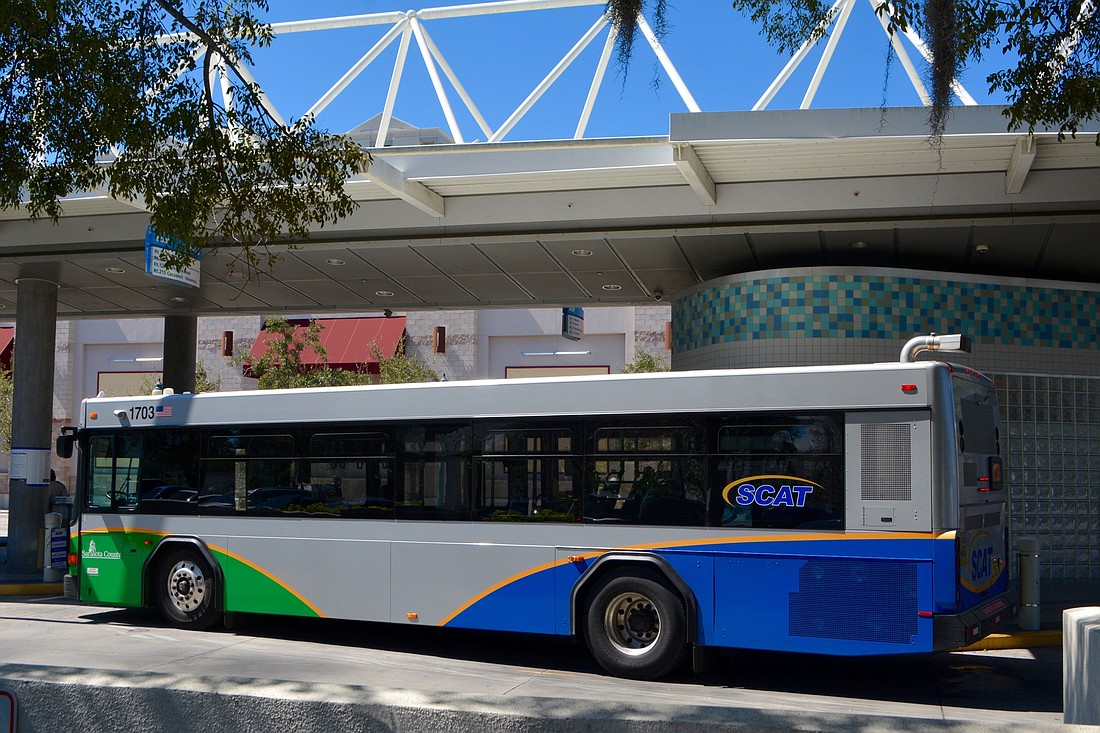- December 18, 2025
-
-
Loading

Loading

Two months ago, county commissioners met with a transit consultant to collaborate on a more efficient, less costly way to run Sarasota County Area Transit.
One thing commissioners knew: Privatizing the system would not lead to sufficient savings.
That’s when TransPro CEO Mark Aesch suggested a partnership with a ride-hailing service, such as Uber or Lyft, as a possible solution to cut costs but still keep riders moving.
The idea was to better match riders with methods and to avoid the expense of operating nearly empty buses on little-used routes or during off-peak hours.
Aesch returned this month with an expanded presentation on a Sarasota-specific model. And commissioners liked what they saw.
“This is not a privatization conversation,” he said. “But there may be opportunities within that toolbox to have some private tools.”
The new model explores the option of subsidizing ridership away from buses according to time of day, geographic location and volume of route use.
Practical applications of this model, according to both Aesch and fellow TransPro staff member Christopher Browning, included:
n Substituting some kind of car operation for bus service in off-peak hours because some routes are well used during morning and afternoon commutes but not as well used in the middle of the day;
n Adjusting some popular routes with car operations on segments that don’t see as many riders as more densely used segments; and
n Possibly reassigning transit staff and resources away from low-performing routes and segments into “alternative model” transportation methods.
In all cases, the rider would pay a small fare — approximately $2 a trip — and the county would subsidize the remaining cost, which is still lower than a full-sized bus. This new cost of subsidization, which relies on taxpayer money, would be at a reduced rate compared to the current costs.
SCAT receives $30 million in funding annually, $21 million of which comes from the county’s operating fund. The rest is provided by state and federal grants.
By simply eliminating low-performing routes, Aesch said, the county could save $6 million, but the system would lose those riders who might not have alternate means of transport.
But if the county instead were to reinvest $3.5 million into the subsidization of an external transportation provider, SCAT could save $2.5 million annually, thereby reducing costs by 13%. Additionally, Aesch and Browning said, the model would potentially increase SCAT ridership by at least 50,000 people or 2%.
“We have all the tools to move this forward,” interim SCAT Director Rob Lewis told commissioners. “Our intent in staff is to develop a systemwide implementation plan. … We believe we are in a perfect place and time to do it.”
Commissioners lauded the model before them and cited its ability to creatively deliver what the private companies could not.
“This plan meets lots of our goals,” Commissioner Nancy Detert said. “You have put in the time, and it’s very creative. That’s what I’m always looking for, and that’s what I didn’t see out of the private sector.”
As the workshop was also the last time the commission would convene prior to leaving for summer recess, Chairman Charles Hines also affirmed the board’s unanimous approval to move forward with implementation was the best possible way to end the session.
“We’re very happy with this,” he said. “It is imperative for us to do our research … and to continue to push these goals and agendas. Today was a huge move forward on this one.”